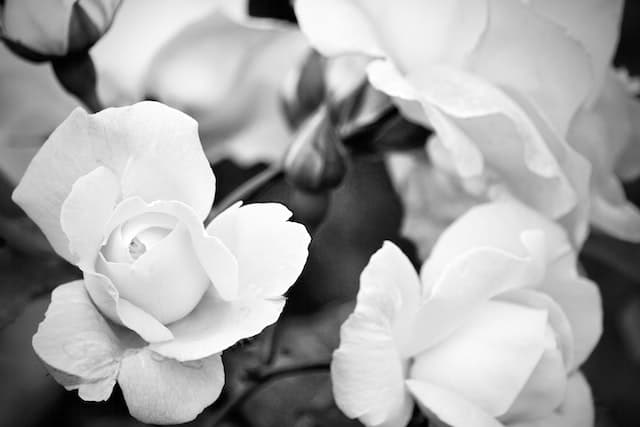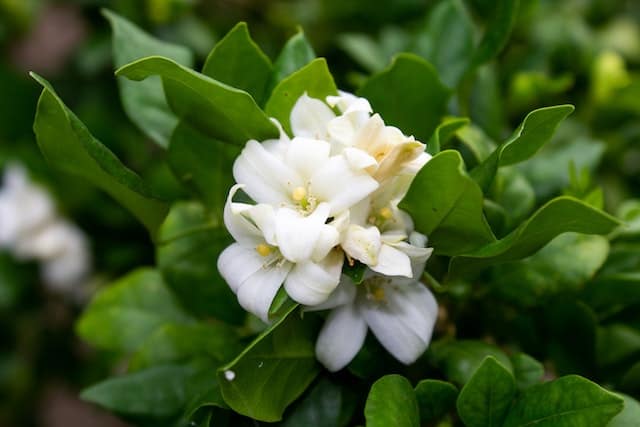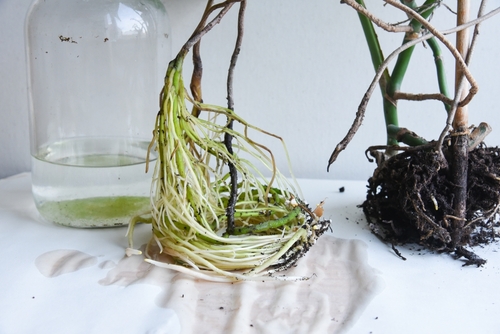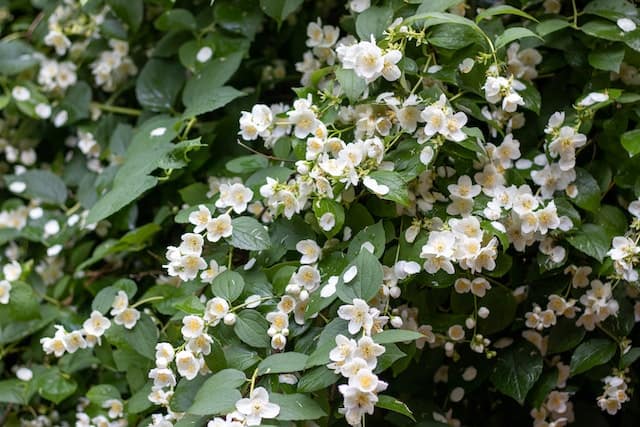Jasmines and gardenias are two plants that closely resemble each other. Plant species such as the cape jasmine don’t make it any easier to differentiate these plants. However, these plants are very different on many levels and we’re here to tell you how.
Jasmine Vs Gardenia

Jasmine is a genus of evergreen shrubs, vines, and flowering plants. There are over 200 different species of jasmine recognized today. Gardenia, on the other hand, is a genus of evergreen shrubs that has 128 different species.
Both plants have white-colored flowers that are slightly different in appearance. For now, let’s take a look at some of the physical differences between these plants.
Comparison
| Jasmine | Gardenia | |
| Leaf Color | Gray-green | Dark Green |
| Stem Color | Yellowish-green | Green that turn brown with age |
| Variegation | Around 200 different species | 128 different species |
| Flower | Thin flowers, of multiple colors, mostly white | Thick layered white flowers |
Jasmine Vs Gardenia Differences
A gardenia represents trust and hope in the language of flowers whereas a jasmine represents purity, modesty, and simplicity. These flowers are very different in many ways so let’s go over all the differences.
More plants comparison:
1. Origin and Name
Among the 200 different species, the Arabian jasmine, or jasminum sambac, was the first jasmine to be discovered. It originates from Persia or present-day Iran. The name ‘Jasmine’ comes from ‘Yasmin’ the Persian name for this plant.
Gardenias or gardenia jasminoides, the most common gardenia species, is a species native to China. It was initially misrecognized as a Jasmine plant but when the Swedish botanist Carl Linnaeus noticed the differences, he renamed it Gardenia in the honor of the Scottish botanist Dr. Alexander Garden.
2. Taxonomy
Jasmine is a genus of evergreen flowering plants that belong to the olive family Oleaceae. Gardenias on the other hand belong to the coffee family Rubiaceae. Jasmine and gardenias belong to the same taxonomic clade, the Asterids, which is the largest taxonomic group of flowering plants in the world.
3. Shape & Appearance

The typical gardenia has a more rounded and dense form whereas jasmines have a tubular with a pinwheel-like, flaring form. Jasmines tend to have lesser petals on average and come in many different colors.
Gardenias on the other hand mostly have layered flowers. They also come in many colors but the most common gardenia color is white.
4. Differences in Color
Gardenia flowers are mostly white however, they can also be found in pale yellow, purple, red, or in some cases, pink colors. The young gardenia stem is green in color but it turns brown as the gardenia matures.
As for jasmine, they are also found in pink, yellow, or even pink-white colors. Their stems are dull green or yellowish green.
5. Leaf Size and Texture
Jasmines have oblovate leaves with serrated or smooth leaves depending on the species. Whereas gardenia plants have ovate leaves that are mostly smooth.
Jasmine leaves are usually greyish green in color whereas gardenia leaves are dark green. Both plants are evergreen so their leaves usually don’t lose color unless it is caused by some disease or old age.
6. Height and Growth Rate
Jasmines grow and mature very quickly, it was found that Jasmines can grow between 12-24 inches within a year. Gardenias on the other hand can grow at a slow rate or fast depending on their species.
However, in most cases, gardenias can grow around 1-2 inches in a year. Jasmine plants can reach 10ft-15ft at maturity whereas gardenia plants can only reach a maximum of 8ft.
7. Flowers

While gardenia and jasmine both are subtropical plants, they have the characteristics that make them unique. Jasmine flowers are known to be thin and long and have around 4-5 petals in a star shape whereas gardenias have a central column with layers of 3-4 petals around it.
8. Growing Conditions, Temperature and Climate
Both jasmines and gardenias are subtropical flowers. They thrive in warm weather but bloom at different times.
Gardenias typically grow between late spring/early summer up until the end of fall whereas jasmines bloom between early summer till late fall. Winter jasmine is an exception that continues to bloom even in winter.
The ideal temperature to grow jasmine is 68°F-72°F during the day and 50°F-55°F at night. Gardenias on the other hand are more temperature sensitive and need around 65°F during the day and no less than 60°F through the night.
Jasmines are hardier than gardenias, they grow in USDA zones 7-10 while Gardenias only grow in USDA zones 8-11.
9. Light, Water, Soil
Gardenias like indirect bright sunlight for at least 8 hours every day. However, they can also tolerate direct sunlight as long as it isn’t more than 4-6 hours a day. Meanwhile, jasmines love direct sunlight and can be grown in it without problems. They need 6 hours of sunlight at the minimum to grow properly.
Jasmines only need to be watered once a week but you might need to water them more during hot days and the growing season, you should wait for the soil to dry before watering your jasmine again
Gardenias on the other hand need to be watered deeply with 1 inch of water per week. Gardenias don’t need much water but leaving them dry for too long will damage the plant.
Jasmines prefer loamy or sandy soil with a nearly neutral pH. However, they can tolerate soils with 6.5-7.5 pH. Gardenias on the other hand are pickier and prefer acidic soil with 5.0-6.5 pH. Gardenia prefers moist soil rich in nutrients.
Jasmine Vs Gardenia Similarities
While there are many differences between gardenias and jasmines, there are also some similarities apart from their flowers. This is because both gardenia and jasmine are sub-tropical plants with very similar growing condition requirements, let’s take a look at them now.
1. Sunlight

Both flowers have similar sunlight requirements, jasmines usually need 6 hours of direct sunlight while gardenias need at least 4 hours of sunlight. However, both plants can thrive very easily with 6 hours of direct sunlight every day.
2. Watering
Since gardenia and jasmine are subtropical plants, they don’t need too much water. However, both plants prefer moist soil. In most cases, these plants will only need to be watered once per week with 1 inch of water. Still, you should water them whenever the soil is dry. Be sure not to overwater them or to leave them dry for too long.
3. Humidity & Temperature
Except for winter jasmine, both jasmines and gardenias thrive in warm weather. Both plants love humid environments and bloom more in them. You can grow both plants with ease at 65°F temperature.
4. Potting and Soil
Since these flowers don’t need to be watered very often, it is important to plant them in well-drained soil. Moreover, both plants thrive well in slightly acidic soil with a 6.5pH. Since both plants are shrubs, you can grow them in a pot as long as there is enough room for their roots to spread.
5. Fertilizer
While both jasmines and gardenias have very different fertilizer NPK ratio requirements, both flowers prefer fertilizers high in potassium. Jasmines prefer a 7-9-5 ratio while gardenias prefer 9-3-6 of NPK in fertilizers.
6. Natural Habitat
With both jasmines and gardenias being subtropical flowers, they can thrive in similar habitats such as in Africa, Oceania, and Australasia. Jasmines are also found in Southeast Asia and Europe while gardenias can also be found in Southern Asia.
Common Problems for Both Plants
Since both plants grow in similar environments, they also share some common problems. Here are some of the common problems that may occur to both gardenias and jasmines and how to deal with them.
Root problems

Gardenias and jasmines are vulnerable to root problems caused by overwatering or other diseases. Overwatering your plant can lead to root rot. Root rot is caused by fungal growth in overwatered soil that begin at the roots and spreads throughout the plant.
Root rot can be fatal if left untreated, the best way to deal with root rot is to repot the plant as soon as possible while pruning away any infected roots, leaves, and stems to prevent the disease from coming back.
Infestation
Aphids, plant lice, spider mites, and other insects target gardenia and jasmine plants. These parasitic insects feed on the plant’s flower sap and reproduce rapidly. If left unchecked, they can eventually consume the entire plant. You can deal with these insects by spraying insecticide on the plant’s leaves and stems.
Outro
Jasmine is a wonderful plant for those looking to have a big flowering shrub at home. Gardenias however are for those who prefer smaller plants with thick flowers. These plants are very different from each other but are equally charming in their ways.
Frequently Asked Questions
Are Jasmine and Gardenias the same?
Jasmine and gardenia belong to different botanical families and are very different flowering shrubs. Jasmine flowers have 4-5 petals and are very thin whereas gardenia has layers of petals with a very thick flower. Jasmine shrubs are usually much bigger and grow much faster than gardenia shrubs.
Do Jasmine and Gardenia smell similar?
Both jasmine and gardenia have a very feminine scent. However, jasmine has a more earthy scent while gardenias have a more creamy scent. It is usually believed that the gardenia scent is more feminine than the jasmine scent.
Is Jasmine a type of Gardenia?
No, jasmines and gardenia are very different plants. People often confuse jasmines with gardenia because of cape jasmine. A cape jasmine is a gardenia plant that was initially categorized as a jasmine flower. However, it was later revealed that cape jasmines are a type of gardenias.

Hey, I’m Lisa and I’ve been an avid gardener for over 30 years. I love writing, talking and living in the garden! Feel free to connect with me on my socials below

